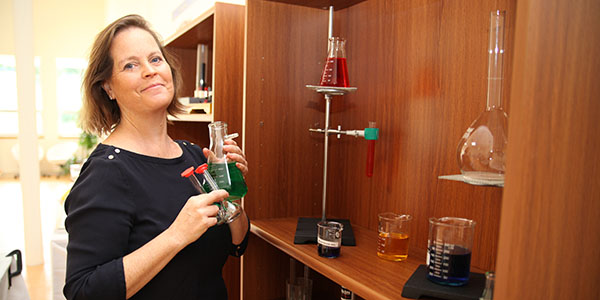
In 1996, 18 percent of high school students in the U.S. took physics. That wasn”™t good enough for Arthur Eisenkraft, chairman of the science department at Fox Lane High School. He was determined to come up with a way of teaching physics and other sciences that would show students a way that was not solely dependent on memorization, but that took into account how people learn utilizing cognitive science to teach.
The structure of his method went like this: each lesson would start with a real-world example of what was being discussed, teachers would then get a sense of the students”™ thinking and follow that up with laboratory exercises demonstrating what was being learned. He took his ideas to the National Science Foundation, which funded him to create curricula. He did, in books that eventually became Active Physics and Active Chemistry, published by It”™s About Time, an educational publisher in Mount Kisco whose curricula use hands-on learning to teach math and science.
“Big publishers approached him,” Â said Laurie Kreindler, co-founder and president of It”™s About Time, “but we (she and husband Tom Laster) created this company for him, to get him to publish his books here.” It”™s About Time was not the first company founded by the couple. Kreindler has long been a filmmaker, specializing in educational documentaries. In 1988, the two met Mary Budd Rowe, an innovator in science education whose goal was to put the wonder of exploration back into the teaching of science. Rowe needed a publisher for her science curricula, so Kreindler and Laster formed a nonprofit, The Learning Team, to publish her work. When they met up with Eisenkraft in 1996, they created It”™s About Time, a for-profit company, to publish Active Physics, his first work in this area. Active Physics led to Active Chemistry, Active Physical Science, and Active Biology, which is still in the works. There is also a program for astronomy, not normally taught at the high school level. In all, there are 15 high school science curricula, three curricula for math, and four for science at the middle school level.
As its business has expanded, so has the company. It moved June 1 to Mount Kisco after 15 years in Armonk, where it was founded. The expanded offices include a 1,700-square-foot professional-development facility for workshops and summer institutes. A 16,000-square-foot area includes book and material-kit development, editorial and production; video studios; offices and a warehouse, fulfillment, and distribution center. The company has also grown to 40 employees after hiring 10 people since the beginning of the year. Thirty are in Mount Kisco, while the other 10, the sales team, are scattered around the country.
The textbooks are published all over the country by various companies, such as Courier and RR Donnelly.
In Westchester, It”™s About Time is used at the Masters School in Dobbs Ferry and in Peekskill at the high school and middle school. Kreindler said Yonkers is considering the program. So far though, it has mainly been used in larger urban districts around the country, New York City, for one, as well as Los Angeles, Seattle, Chicago, Denver, San Antonio and San Diego.
“Initially,” said Kreindler, “it went where the need was,” where students may not have been doing well with a traditional curriculum and the district wanted a change. If that is not the case, it can be hard to get a school system to try something new.
But Dana Turner, who is in charge of product development, says what can happen then is that new programs can move in as older teachers retire and are replaced by younger ones who are more receptive to new methods of teaching. The recession has not helped either, as school districts, operating with reduced tax revenue, have less to spend. But Turner, as she dropped a ruler through a reporter”™s hand to demonstrate Newton”™s laws of motion, said the It”™s About Time programs, which are tailored to each district, can result in savings to school systems. Â Some schools, she said, save 30 to 40 cents on the dollar from what they had been spending.
“We”™ve come a long way,” she said, “from the early years, when we were buying lab equipment from other companies that didn”™t work.”



















